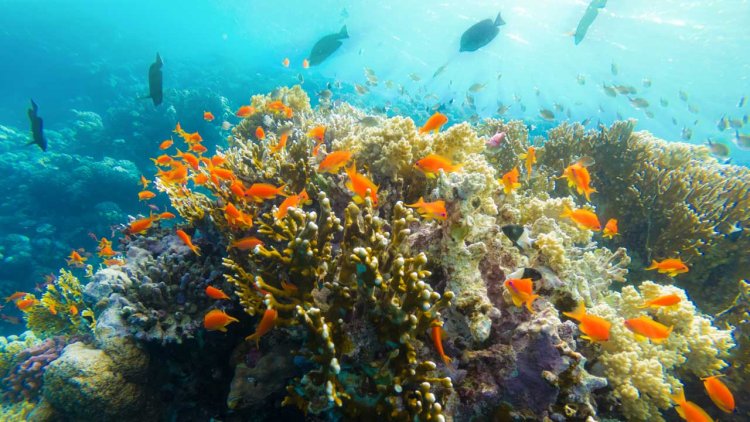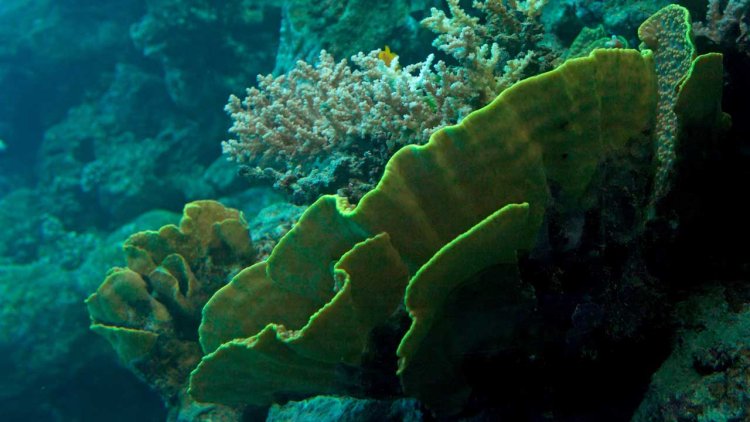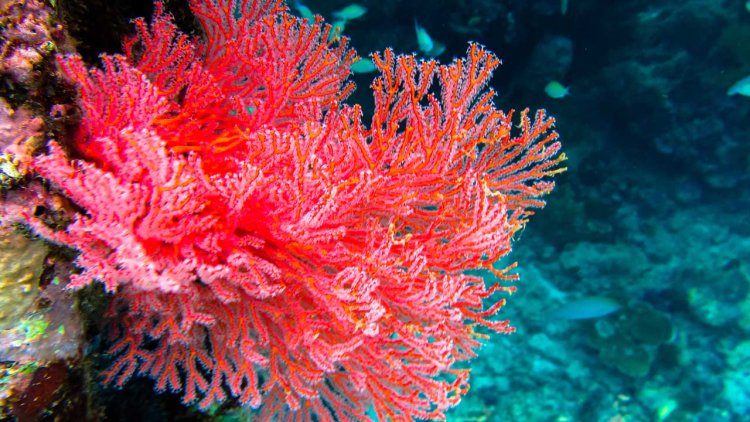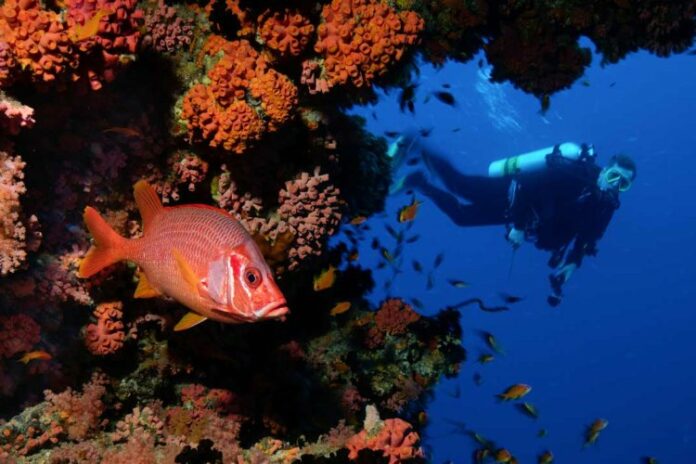Coral reefs are among the most productive and biologically diverse ocean ecosystems on Earth. Many local human communities depend on tropical coral reefs for cultural practices, fisheries, and coastal protection. Unfortunately, coral reefs are threatened by the combined effects of local human impacts and global climate change.
New research published in Nature demonstrates that integrating land and sea in coastal ocean management supports the continued persistence of coral reef ecosystems in our changing climate. The study was led by NOAA’s Pacific Islands Fisheries Science Center and Bangor University in the United Kingdom.
“Our research finds that simultaneously reducing local land- and sea-based human impacts benefits coral reef ecosystems under ocean warming,” says Dr. Jamison Gove, a research oceanographer with the science center and co-lead of this study.
Land-Sea Connections
Human population density is four times higher in coastal areas than the rest of the world. This means that most human activities, development, and infrastructure are concentrated along the shoreline. In these areas, land-based impacts include wastewater pollution and urban runoff—a significant contributor to increasing coral disease and reducing coral growth and reproduction. They combine with sea-based impacts, like fishing pressure, to fundamentally disrupt coral reefs.
The research was conducted in the Hawaiian Islands, where 85 percent of people live within a few miles of the coast. But Hawaiʻi also has long stretches of remote coastline that remain undeveloped. This gradient in human population and coastal development makes it an ideal location to test how differences in local land-sea human impacts influence coral reefs over time.
The team of researchers used 20 years of high-resolution data on local human impacts and repeated underwater surveys of corals and reef fish from the same reefs to detect and document ecosystem change.

They discovered that on some surveyed reefs, coral cover increased over time—a positive indicator of reef ecosystem health—whereas on others, it decreased. The study showed that the difference between these opposing trajectories in reef health was their local conditions. Reefs with the lowest levels of land-based impacts and increased fish populations (particularly herbivorous fish that primarily feed on algae), had a positive trajectory in coral cover. Land-based impacts that impact coral include wastewater pollution, nutrient input, and urban run-off.
“Integrated land-sea management has been the guiding paradigm of coral reef conservation for decades, but evidence of its efficacy above either approach in isolation remains wanting and difficult to test,” says Dr. Gareth Williams, Associate Professor at Bangor University’s School of Ocean Sciences and co-lead of the study. “We generated the detailed and local-scale data needed to test how different combinations of land- and sea-based human impacts influenced reefs over time.”
An Unprecedented Event
As the global climate continues to change, there continues to be an increase in record-breaking events. Hawaiʻi is no exception. In 2015, the strongest marine heatwave recorded in Hawai‘i took place. A marine heatwave can have devastating effects on coral reef ecosystems. Corals have a symbiotic relationship with microscopic algae that produce their primary food source and give them their green, blue, and purple colors. During a marine heatwave, heat-stressed corals can lose their algae, appearing white or “bleached.” Prolonged coral bleaching can result in coral starvation and coral death.
“The 2015 marine heat wave in Hawai‘i was unprecedented in the region—nothing comes close in more than a century of recorded temperature data. As a consequence, many reefs experienced severe bleaching and extensive coral death,” says Dr. Gove. “But to our surprise, we found that coral cover was unchanged at nearly 20 percent of the reefs in our study. Which raises the question: Why did some reefs fare better than others despite experiencing similarly extreme levels of heat stress?”

Once again, the researchers found that local land-sea conditions mattered. Reefs with the lowest levels of land-based stressors and increased fish populations had reduced coral loss during the marine heatwave.
“The study provides a detailed and more nuanced understanding of how land- and sea-based stressors combine to influence coastal ecosystems,” says Gerry Davis, a resource manager and lead of the Habitat Conservation Division at the Pacific Islands Regional Office. “This information is key for developing locally relevant and targeted management actions.”
A Path to Recovery
The researchers also assessed the influence of local conditions on coral reef ecosystem health for 4 years following the 2015 marine heatwave. They measured how much of the reef floor was covered by organisms that build reefs by depositing calcium carbonate, specifically hard corals and encrusting algae that help cement the reef together. Collectively known as reef-builders, these organisms represent an indication of ecosystem recovery following a major disturbance.
Again, the researchers found that local land-sea conditions influenced reef ecosystem health. Reefs with the highest cover of reef-builders had the lowest levels of wastewater pollution and had abundant populations of herbivorous fish known as “scrapers.”
Scrapers, which primarily are parrotfish (uhu) in Hawaiʻi, are an aptly named group of reef fish as they literally scrape the reef with their teeth while eating. “Uhu not only help remove algae that can smother corals, but they also clear space for the settlement and growth of reef-builders,” says co-author Dr. Greg Asner, Director of Arizona State University’s Center for Global Discovery and Conservation Science. “They are extremely important for coral reef recovery following a marine heatwave.”

The researchers then compared various possible outcomes for coral reefs based on different management scenarios. They found that coupling land- and sea-based resource management led to a positive outcome. It resulted in a far greater probability of a reef having a high cover of reef-builders 4 years after the marine heatwave than if either land or sea were managed in isolation.
“The notion that land and sea are interconnected is deeply rooted in indigenous Hawaiian stewardship practices,” says Dr. Gove. Traditional Hawaiian resource management stretched from the mountains (mauka) to the sea (makai) and was inclusive of the entire watershed, or ahupuaʻa. “Our findings support the need for reintegrating both land and sea within coastal ocean management, akin to long-standing indigenous management of island ecosystems.”
Brian Neilson, the Administrator for the Hawaiʻi Division of Aquatic Resources and a co-author of the study says, “This research highlights that a place-based, community-driven, and multi-agency effort is needed to effectively manage and conserve our coral reefs in Hawaiʻi now and into the future.”



